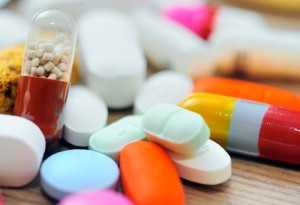WHO says drug resistance remains public health crisis
 The World Health Organisation (WHO) has said multidrug-resistant tuberculosis TB (MDR-TB) remains a global public health crisis.
The World Health Organisation (WHO) has said multidrug-resistant tuberculosis TB (MDR-TB) remains a global public health crisis.
The WHO estimates that 480,000 people fell ill with MDR-TB in 2015, according to its publication, “Global Tuberculosis Report 2015” available to the Ghana News Agency.
It said India, China and the Russian Federation carry the major burden of MDR-TB, which together accounted for nearly half of all cases globally.
It noted detection and treatment gaps continue to plague the MDR-TB response.
The report said in 2015, only 1 in 5 of the people newly eligible for second-line treatment were able to access it. Cure rates continue to remain low globally at 52 per cent.
Dr Mario Raviglione, Director of the WHO Global TB Programme said “The dismal progress in the TB response is a tragedy for the millions of people suffering from this disease. To save more lives now, we must get newly recommended rapid tests, drugs and regimens to those who need them. Current actions and investments fall far short of what is needed.”
He said “The world is finally waking up to the threat of antimicrobial resistance – now is the time to accelerate the MDR-TB response.”
It added that in 2015, 22 per cent of HIV-positive TB patients were not enrolled on antiretroviral therapy (ART). According to WHO recommendations, ART needs to be made available for all HIV-positive TB patients.
The report said nearly a million children under five years of age, and people living with HIV, who are especially vulnerable to TB and who were eligible for preventive treatment, were able to access it in 2015.
It noted that this needed to be rapidly expanded.
For TB care and prevention financing, the report said investments in low- and middle-income countries fall almost US$2 billion short of the US$8.3 billion needed in 2016.
This gap will widen to US$6 billion by 2020 if current levels of funding are not increased.
It noted overall, around 84 per cent of the financing available in low- and middle-income countries in 2016 was from domestic sources, but this was mostly accounted for by the BRICS (Brazil, the Russian Federation, India, China and South Africa) group of countries.
It said other low- and middle- income countries continue to rely heavily on international donor financing, with more than 75 percent coming from The Global Fund to Fight AIDS, TB and Malaria.
In addition, WHO estimates that at least an extra US$1 billion per year is needed to accelerate the development of new vaccines, diagnostics, and medicines.
“The resources deployed against TB, the leading infectious killer in the world, are falling short,” said Dr Ariel Pablos-Méndez, Assistant Administrator for Global Health, of the US Agency for International Development (USAID) – the leading bilateral funder of the TB response.
“Everyone has a part to play in closing the gap. As the report shows, we need universal health coverage, social protection mechanisms, and public health financing in high burden countries. The development aid community needs to step up more investments now, or we will simply not end one of the world’s oldest and deadliest diseases.”
Source: GNA
